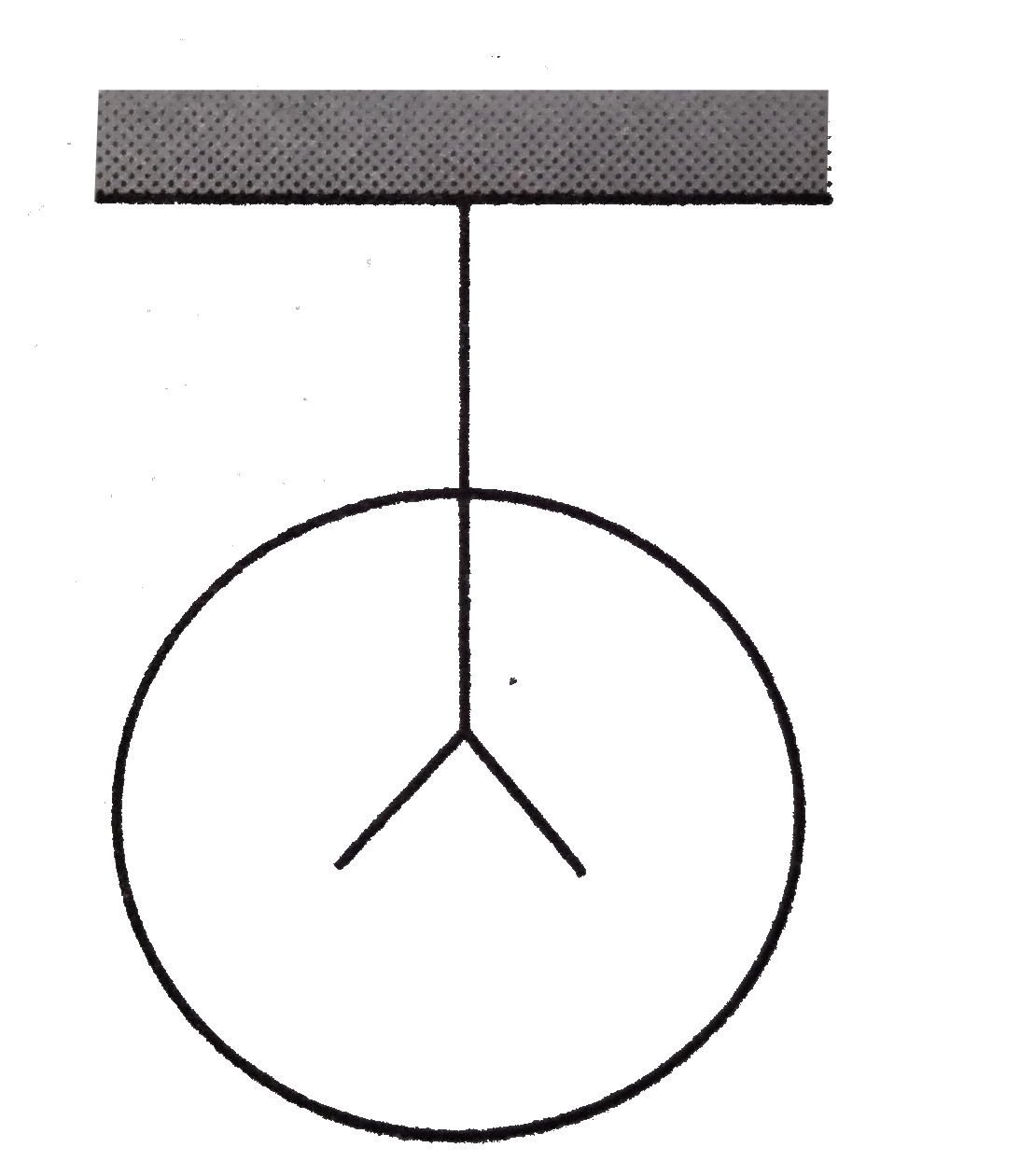An electroscope is given a positive charge causing its foil leaves to separate. When an object is brought near the top plate of the electroscope the foils separate even further. We could concludeA that the object is positively charged.B that the object is electrically neutral.C that the object is negatively charged.D only that the object is charged.E only that the object is uncharged.
The correct option is: A that the object is positively charged.Explanation:If the leaves are positive further separation means they are becoming more positive which implies electrons are leaving the leaves attracted to the top plate of the electroscope. This will occur if the object is positively charged.
Related Solutions
An electroscope is given a positive charge, causing its foil leaves to separate. When an object is brought near the top plate of electroscope, the foils separate even further. We conclude
 View Solution
View SolutionAn electroscope is given a positive charge, causing its foil leaves to separate. When an object is brought near the top plate of the electroscope, the fiols separated even further. We conclude.
 View Solution
View SolutionAn electroscope is given a positive charge, causing its foil leaves to separate. When an object is brought near the top plate of the electroscope, the fiols separated even further. We conclude.
View Solutionकिसी विद्युतदर्शी में यदि कोई ऋण आवेशित वस्तु धातु की क्लिप के सम्पर्क में लाई जाती है तो विद्युतदर्शी की पट्टियाँ फैल जाती हैं। अब यदि कोई अन्य आवेशित वस्तु, जिस पर समान मात्रा का धन आवेश है, क्लिप के सम्पर्क में लाई जाए तो क्या होगा ?
View SolutionA positively charged body is brought near to bob of an uncharged gold leaf electroscope , then :
View SolutionWhat will happen to the leaves of an electroscope if a positively charged body is brought near (a) An uncharged electroscope ? (b) A positively charged electroscope ? ( c ) A negatively charged electroscope ?
View SolutionWhat will happen to the leaves of an electroscope if a positively charged body is brought near
(a) An uncharged electroscope ?
(b) A positively charged electroscope ?
( c ) A negatively charged electroscope ?View SolutionWhen a positively charged object is brought near a positively charged object, what kind of force acts between them?
View SolutionWhen a neutral metallic object is placed near a finite metal plate having positive charge, the electric force on the object will be
View SolutionWhen a negatively charged ebonite rod is brought close to an uncharged electroscope, the leaves of the electroscope develop positive charge and diverge.
View Solutionकिसी आवेशित विद्युतदर्शी के निकट एक अनावेशित वस्तु लाने पर इसके पत्रों के बीच अपसरण क्यों घट जाता है ? अपने उत्तर की व्याख्या कीजिए।
View SolutionA positively charged object is kept near a metallic object. If we connect the metallic object to earth, then describe how charge flows.
View SolutionWhat will you observe when the metal top of an electroscope is touched with :
a positively charged object ?View Solutionएक धनावेशित वस्तु के संपर्क में आने पर एक अनावेशित वस्तु पर …..…. आवेश आ जाता है।
View SolutionA neutral spherical metallic object a is placed near a finite metal plate B carrying a positive charge. The electric force on the object will be :
View SolutionWhen an electroscope is charged by conduction, it gets a charge ................ (opposite/ identical) to that of the charged object.
View SolutionWhen an electroscope is charged by induction, it gets a charge ..................... (same/ opposite) to that of the charged object.
View SolutionAnswer in one sentence :
What happens to the gold leaves when a charged object is taken near the disc of a gold leaf electroscope?View SolutionWhat will you observe when the metal top of an electroscope is touched with :
a negatively charged object ?View Solutionकिसी विद्युतदर्शी की सहायता से आप किसी वस्तु पर आवेश की उपस्थिति तथा इसकी प्रकृति कैसे ज्ञात करेंगे?
View Solution
